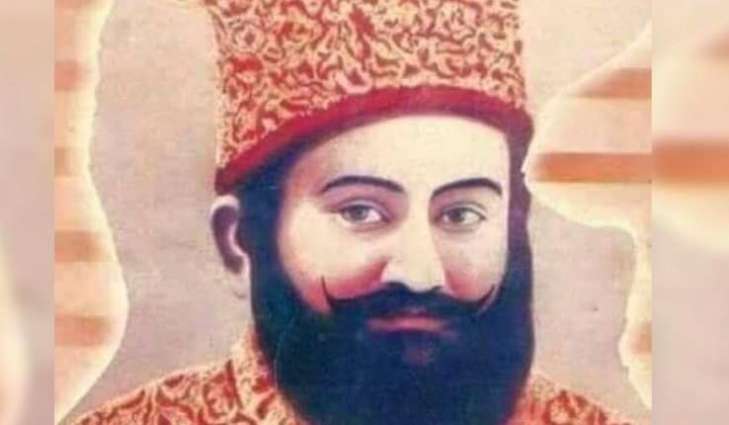
 In fact all the civil and military officers were under oath not to disclose the burial place of Shaheed Pir Sibghatullah. This is evident from a speech of Late Dr. Ghulam Ali Allana, the former Vice Chancellor of Sindh University, which he made at a program in Hyderabad held by Sindhi Language Authority to mark 100th birthday of Surhia Badshah Shaheed Pir Sibghatullah. He had told the audience, “Nasir Ali Khan, one of my friends, a former police office, had told that he was under oath not to disclose burial place of Shaheed Pir.”
In fact all the civil and military officers were under oath not to disclose the burial place of Shaheed Pir Sibghatullah. This is evident from a speech of Late Dr. Ghulam Ali Allana, the former Vice Chancellor of Sindh University, which he made at a program in Hyderabad held by Sindhi Language Authority to mark 100th birthday of Surhia Badshah Shaheed Pir Sibghatullah. He had told the audience, “Nasir Ali Khan, one of my friends, a former police office, had told that he was under oath not to disclose burial place of Shaheed Pir.”
March 20 – The Martyrdom Day of Surhia Badshah
The British authorities were so scared that they didn’t dare laying to rest the martyred Pir Pagaro Pir Syed Sibghatullah Shah-II at any place in Sindh. Before the execution (during the so-called trial- Pir Sahib was hanged on March 20, 1943), he was asked ‘where he wanted to be laid to rest’, and his reply was: “At my ancestral graveyard Pir Jo Goth”. But the British feared that his grave anywhere in Sindh would turn to be a sacred place for the pilgrimage and keep alive the Hurs to continue fighting the war. Their fear is evident from a telegraphic message of Viceroy of India to the Governor of Sindh on January 15, 1943 (Much before start of the trial). The telegram reads: I have now consulted the ministers on burial at sea. Their opinion is that Muslim sentiments are against it except in case of death at sea. Also, there is danger of disturbances or likelihood of the tomb becoming an object of pilgrimage or veneration if the burial takes place at Hyderabad. I will discuss this further with Richardson, who is coming here on 16th January and will then report final advice.”
In the meantime, Governor Dow informed the Viceroy on 23rd February that the military authorities would, in a contingency, arrange for disposal outside Sindh without touching Karachi, and that the religious requirements would be duly observed.
An official confidential report submitted to Viceroy by F. Young, the Commissioner of Police under Martial Law, about his meeting with Pir Sahib on 18th March, says: “He was very anxious to know what would happen to his body. I assured him that it would be treated with all respect according to Muslim rites. He said that Pir felt he ought to be buried in the Pir’s burying place in the Dargah even if some of his Mureeds were against it. He said he could be given a very small tomb and no ceremony, and there was plenty of room.”
Colonel, and later Major General, Wasal Muhammad Khan writes in his autobiography, parts of which were published earlier in Sindh Quarterly magazine in 1980, that British considered dead Pir Pagaro more dangerous, and that’s why he was buried at an island off Persian Gulf. Governor Dow in a brief letter to Viceroy on 21st November 1942 had suggested burying Pir Pagaro outside Sindh and keeping it secret for a long time and for that purpose a place should be selected where no local person is found.
The Viceroy had told the Governor Dow through telegram on 21st December 1942 that the government was also considering burial of Pir Pagaro somewhere in Madhiya Pardesh. The correspondence continued between the Viceroy, Governor Dow and other high officials on the subject discussing different proposals. Viceroy in a letter to Governor Dow on 9th February apprehended if the Sindh ministers too were considering burial of Pir Pagaro. “This would be dangerous, as one of earlier Pagaro was thought to be a martyr and his tomb became the source of disturbances.”
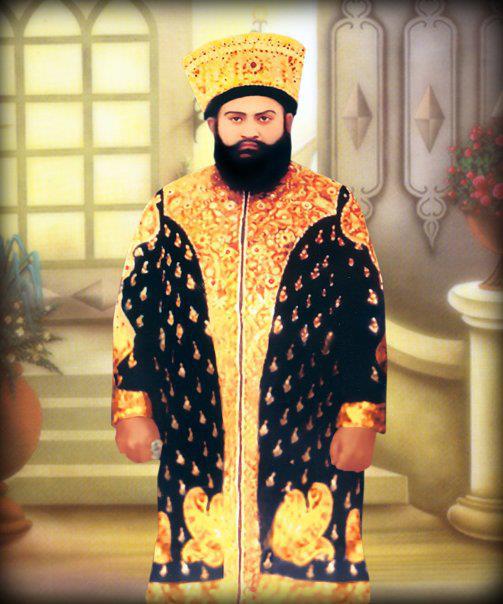 In 10th February telegram to the Viceroy the Governor suggested the burial at Jeewani or somewhere else outside Sindh and the former in his reply on 23rd February assured that the military authorities would arrange the burial outside Sindh. “Pir Pagaro will not be buried in Karachi,” he said.
In 10th February telegram to the Viceroy the Governor suggested the burial at Jeewani or somewhere else outside Sindh and the former in his reply on 23rd February assured that the military authorities would arrange the burial outside Sindh. “Pir Pagaro will not be buried in Karachi,” he said.
The burial place of Pir Pagaro remained a secret for decades. However Dr. H. T. Sorley in his book ‘Diversions of Mnemosyne’ (Volume: The Web of III Mnemosyne) disclosed that Pir Pagaro was buried at Charan Island, which had been under the British control.
Meanwhile, there were rumors that Pir Sahib was buried in the premises of Hyderabad Central Jail for time being under the supervision of Gen. Richardson, Lambrick and Ridley. All the signs of the grave were erased so that nobody could know about it. The two coats of limestone were put inside the grave. However, the Molsworth writes that the body of Pir Pagaro was shifted at night to the Indus Delta area from where it was sent in a war ship of Indian Royal Navy to a far off coastal area of Mekran and then buried at Astola Island observing all Islamic rites. The signs of grave there were also erased. Molsworth quotes Naval Commander’s memoirs according to which the wild creatures like snakes and other reptiles were found in abundance at the Island.
The documents pertaining to Pir Pagaro, available at British Library, also contain certain reports about burial of Pir Sahib at Astola Island. A report bearing the date of 23rd August 1943, prepared by Mr. Gilchrist, refers to 19th March 1943 telegram of Viceroy to the Secretary of State, India according to which he directs for burying Pir’s body at Astola Island off Mekran Coast falling in the limits of Qalat State. “Only we will be aware of this burial place, and would be able to find it whenever needed.”
A former railway officer Syed Shabbir Hussain writes in his autobiography that ‘after hanging the Pir Sahib, his body was taken away in an army plane without letting anybody know what was being done with it. However, he refers to an article of his friend journalist Mian Muhammad Shafi, appearing in Urdu daily Nawa-e-Waqt, in which, he thinks, the true position was stated. “Shafi Sahib, who happened to be attached with GHQ at Shimla, somehow got a file of a lame Maj. General Molesworth, who handled the Hur Operation at GHQ. The file contained the narration of the entire Hur Operation including Pir Sahib’s execution after court martial. Shafi says that he also saw a telegram from Maj. General Richardson, which said that while proceeding to the gallows, Pir Sahib bore a smile on his face. According to the file, his body was taken to a small island in Balochistan coast named Astola to be buried there, hidden from everybody’s gaze.”
Maj. Gen. Wasal Muhammad Khan, in his article (published in Sindh Quarterly 1982) and his autobiography, had also written on burial place of Pir Pagaro, as earlier mentioned, but a researcher Allah Warayo Bihan says Wasal Muhammad Khan had written a letter attached with his article to the ministry of defence, Rawalpindi seeking permission for its publication, but Gen. Rahim, in response, advised him to delete the parts relating to burial place, and after that Wasal Muhammad altered the article and mentioned mere ‘an island of Persian Gulf’. The only sentence then appearing in his article was that ‘The authorities kept the burial place highly secret as they apprehended that dead Pir would prove to be more dangerous than a live Pir. The burial place was also kept secret from me however I somehow managed to get a copy of memory sketch of burial place with the help of my section.’
A person of Hur community, who didn’t want to be identified for being in government job, told that in 1980s, he had visited the village of Wasal Muhammad Khan and urged him to give details of actual burial place of Pir Sahib along with the map of that place he had, but he refused saying ‘I will not, unless the GHQ allows’.
(In fact all the civil and military officers were under oath not to disclose the burial place of Shaheed Pir Sibghatullah. This is evident from a speech of Late Dr. Ghulam Ali Allana, the former Vice Chancellor of Sindh University, which he made at a program in Hyderabad held by Sindhi Language Authority to mark 100th birthday of Surhia Badshah Shaheed Pir Sibghatullah. He had told the audience, “Nasir Ali Khan, one of my friends, a former police office, had told that he was under oath not to disclose burial place of Shaheed Pir.”)

Late Syed Hashim Raza also told in an interview that according to his knowledge, Pir Sahib’s body was secretly buried at an island near Balochistan about 40 miles from Karachi.
A researcher Gul Hassan Kalmati in his travelogue ‘Kech Mekran Danh Safar’ (A journey to Kech Mekran) published in weekly magazine of Sindhi daily Kawish in 2014, writes that he visited Hipat Talar Island where the local fishermen took him to a a heap of stones, which is said to be a grave. According to local people that grave dates back to the last period of British rule, and is said to be of a Saint hailing from Sindh. According to Kalmati’s view, it might be the resting place of Pir Pagaro Surhia Badshah.
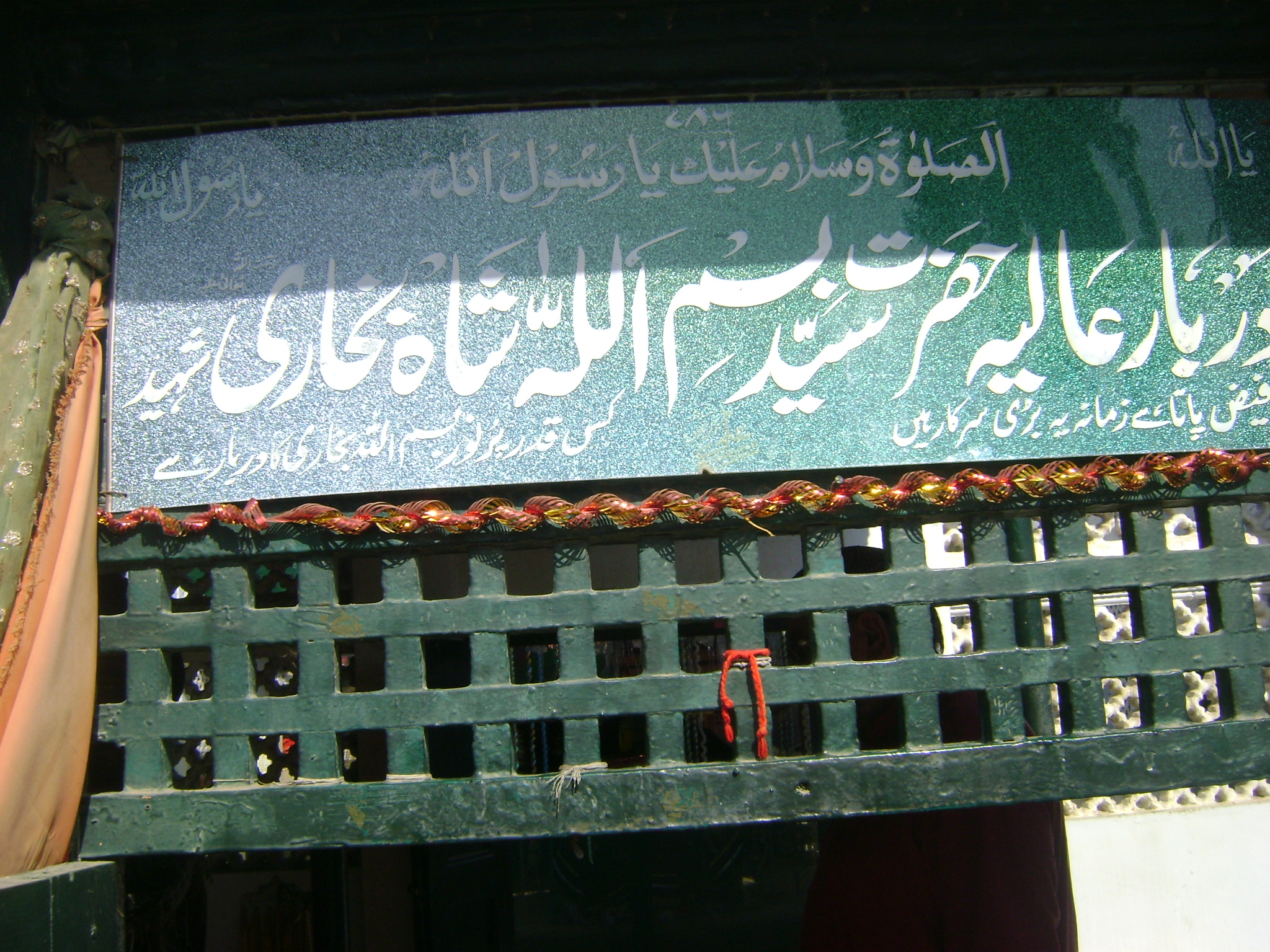 Another writer Nawaz Kunbhar’s article, published in daily Kawish on 12th February 2014 discloses that Surhia Badshah was buried at ‘Dajar Island’ located three to four kilometers off Mekran Coast. The writer narrated his brief chat with Pir Ali Gohar Shah, the younger brother of present Pir Pagaro VIII Pir Syed Sibhatullah Shah-III at Choondko area of Khairpur district in January that year, and quoted him as saying that he had obtained a file from the British record in 1992 according to which their grandfather Pir Syed Sibghatullah Shah-II was buried at Dajar Island. Pir Ali Gohar had handed that file over to his father Pir Pagaro VII Shah Mardan Shah. The writer told Pir Ali Gohar about his visit to Astola Island, but he rejected that Surhia Badshah was buried there.
Another writer Nawaz Kunbhar’s article, published in daily Kawish on 12th February 2014 discloses that Surhia Badshah was buried at ‘Dajar Island’ located three to four kilometers off Mekran Coast. The writer narrated his brief chat with Pir Ali Gohar Shah, the younger brother of present Pir Pagaro VIII Pir Syed Sibhatullah Shah-III at Choondko area of Khairpur district in January that year, and quoted him as saying that he had obtained a file from the British record in 1992 according to which their grandfather Pir Syed Sibghatullah Shah-II was buried at Dajar Island. Pir Ali Gohar had handed that file over to his father Pir Pagaro VII Shah Mardan Shah. The writer told Pir Ali Gohar about his visit to Astola Island, but he rejected that Surhia Badshah was buried there.
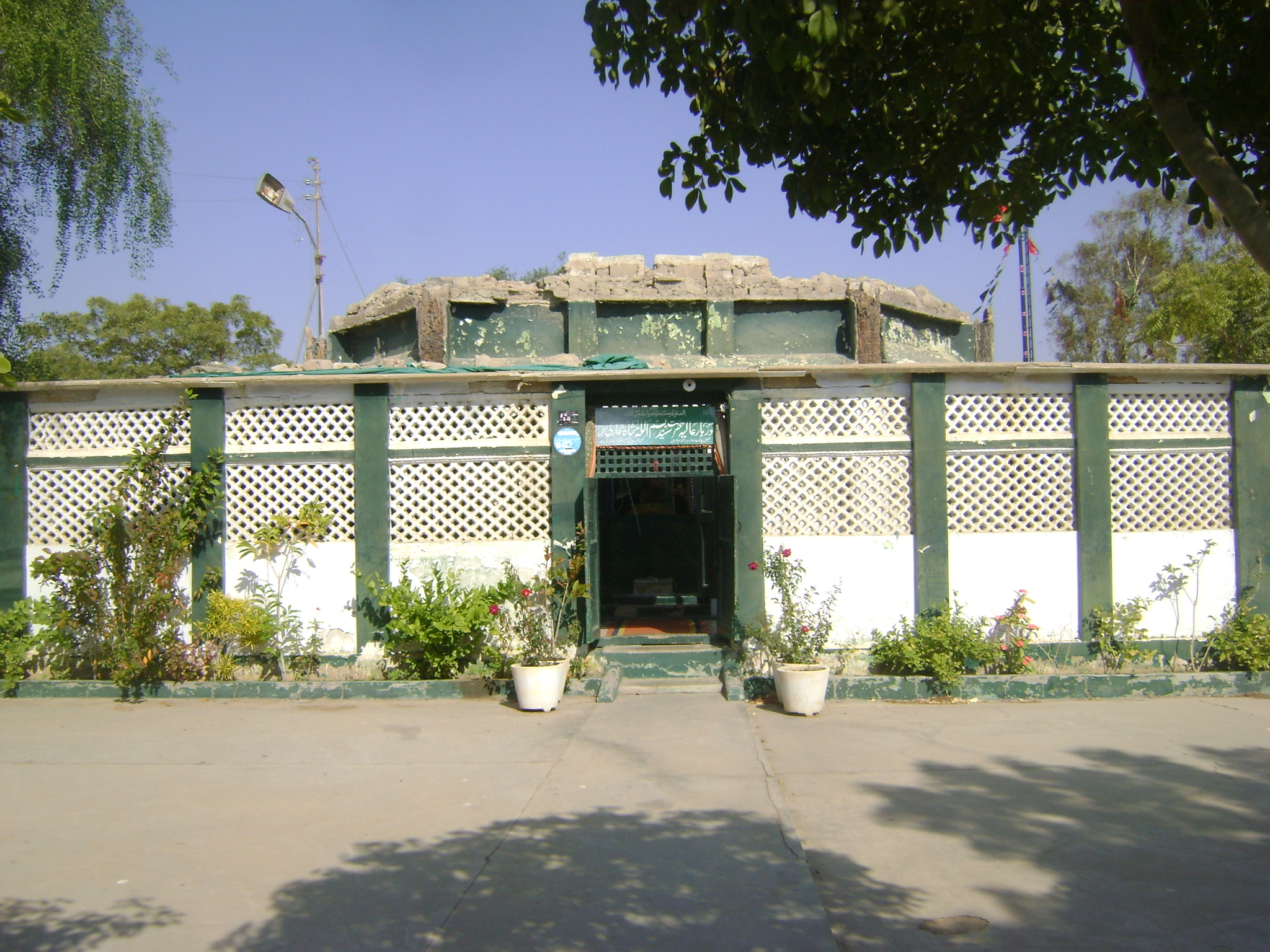
But few years back, a new research appeared with a different idea about the final resting place of Surhia Badshah. Researcher Nisar Shaikh in his article published by a Sindhi language fortnightly magazine ‘Affair’ claimed that Pir Sahib was laid to rest in Karachi. According to him the burial place is located at ‘Kidney Hill’, which currently is in the midst of city but at the time of burial, it was a deserted area far from the city. This area is close to Kingri House, the residence of Late Pir Pagaro-VII. “A shrine of a Saint known as ‘Bismillah Shah Shaheed’ exists at Kidney Hill, which most probably is the shrine of Surhia Badshah Pir Sibghatullah Shah-II,” he claims citing the evidence in its support that late Pir Nadir Ali Shah, the younger son of Surhia Badshah, was the caretaker of shrine, who carried out construction work at the shrine. The electricity bill also bears Pir Nadir Shah’s name while his family continues taking care of the shrine. All the men working at the shrine are under them, and the locks of a box put there for the donations, are opened only after Ali Akbar Shah, the grandson of Pir Nadir, permits. Some persons who served at the shrine are Ghaloo Larik of Pir Jo Goth (He served for years), Nangar Fakir Barecho of Jhangara Bajara, Sehwan spent 25 years of his life at the shrine from 1965 to 2001 and after him his son Ali Nawaz Barecho took over responsibilities of his father and continues taking care of shrine till date. “Some family members of Pir Nadir and other senior Hurs used to visit the shrine for laying floral wreath,” Nisar Shaikh said.
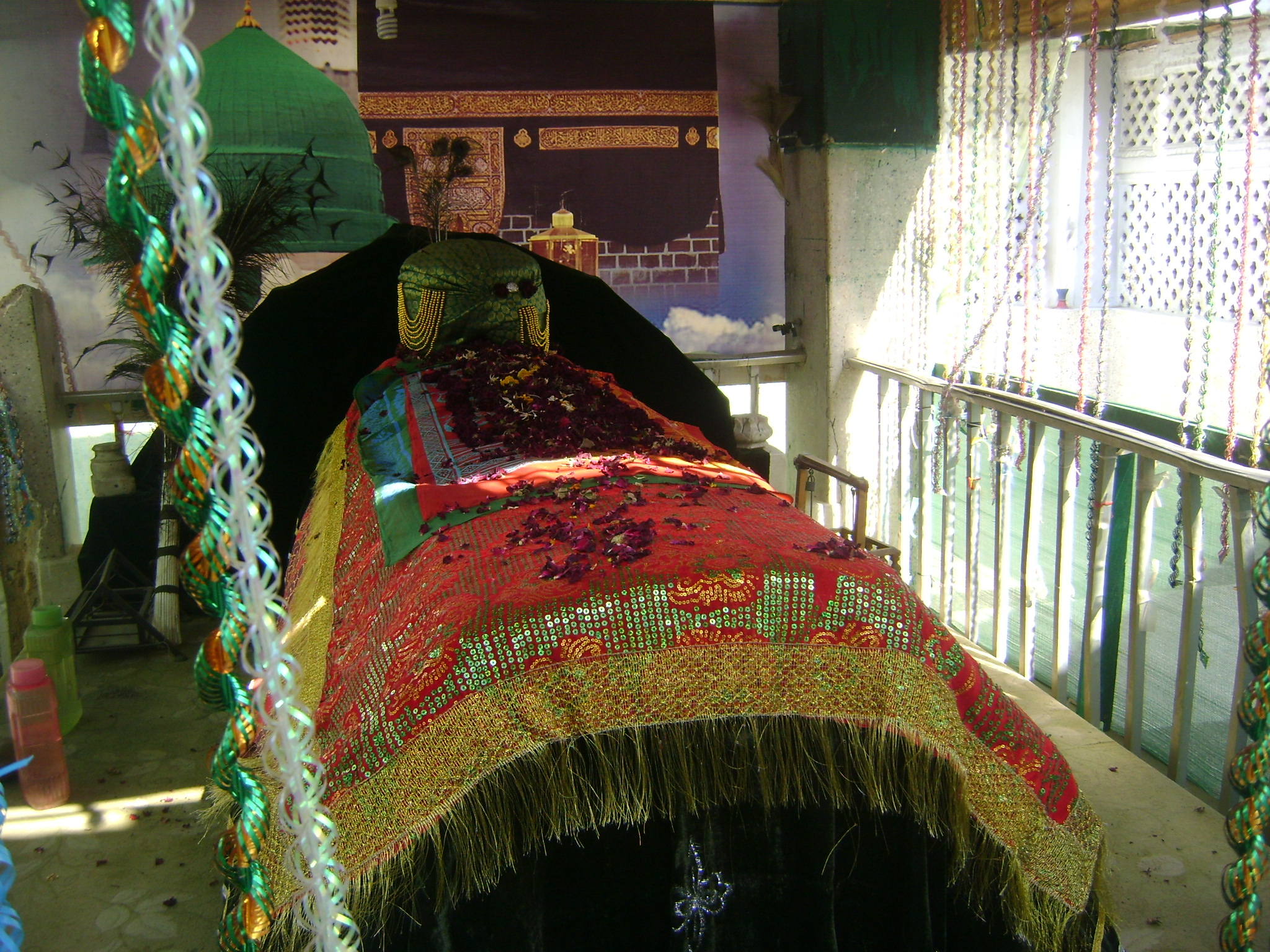 The researcher says Surhia Badshah was buried in the premises of Hyderabad jail after the execution, but after two days, his body was exhumed and shifted to Karachi for burial at Kidney Hill. He also raised a question about the Pir’s dress, which he wore at the jail or at the time of arrest.
The researcher says Surhia Badshah was buried in the premises of Hyderabad jail after the execution, but after two days, his body was exhumed and shifted to Karachi for burial at Kidney Hill. He also raised a question about the Pir’s dress, which he wore at the jail or at the time of arrest.
The author of this book, accompanied by Nisar Shaikh, visited the shrine to further get the details. The shrine is located at a hill called the ‘Kidney Hill’ with a 4ft high boundary wall. Some huts are built inside the premises, which is spread over two acres of land. In the rear, at one side of the shrine, a small shed with two steps is built. An Alam (A big wooden pole with a flag on its top) also could be seen erected behind the shrine. The Muhammad Ali Housing Society, located at the bottom in the east could be viewed from the hill. The shrine area is surrounded by a jungle over a vast area, which initially was owned by Federal government after inception of Pakistan, and later transferred to Karachi Metropolitan Corporation. The Overseas Pakistanis Foundation then claimed the land for launching the housing project but it was challenged in the court.
According to Nisar Shaikh, the Kidney Hill area fell in the limits of British cantonment and several Baloch insurgents were executed there by the imperialist forces.
A board inscribed with ‘Dargah-e-Aalia Hazrat Syed Bismillah Shah Ghazi Shaheed’ in Urdu hangs at the door of the shrine, which is in dilapidated condition, as its wooden tomb collapsed in heavy rains a couple of years back. No other board with history and background of the Saint buried there could be found here unlike other shrines. However, there are unconfirmed reports that a plaque used to be there, but was taken away in early 1950s by Pir Sikanadar Shah. Nisar Shaikh himself once saw a piece of stone inscribed with a word ‘Pir’ but that stone too was now missing.
Late Pir Pagaro Shah Mardan Shah used to visit the shrine, offer prayers and lay floral wreath at the night time. His son, present Pir Pagaro VIII too used to visit the shrine before and after his installation as Pir Pagaro.
The men assigned to serve at the shrine are strictly prohibited from disclosing the fact that this was the final resting place of Surhia Badshah Shaheed Pir Sibghatullah Shah Rashdi-II. The Khalifas and other Hur Fakirs visiting the shrine were too overheard saying that they are bound by the orders not to disclose the fact. Nisar Shaikh claims he had written letters to the Late Pir Pagaro and former President Gen. Musharraf for declaring officially that this shrine was in fact the resting place of Surhia Badshah. He said there is no harm in it, as the Sindh Assembly, which had passed infamous Hur Act in 1942, had now declared the 20th March as public holiday to pay homage to Surhia Badshah during the PPP government a few years back.
______________________
A chapter from the book ‘Hur – The Freedom Fighter’ authored by Nasir Aijaz. The book was published in August 2015 by Culture Department, Government of Sindh.